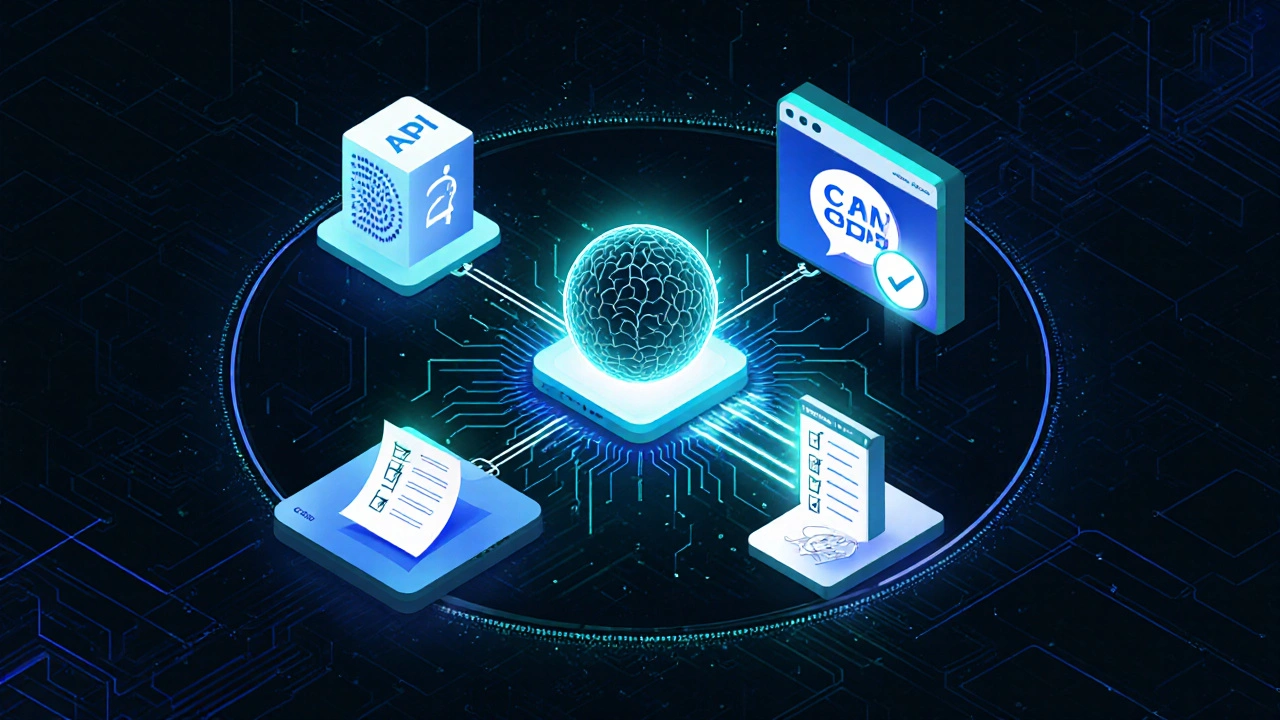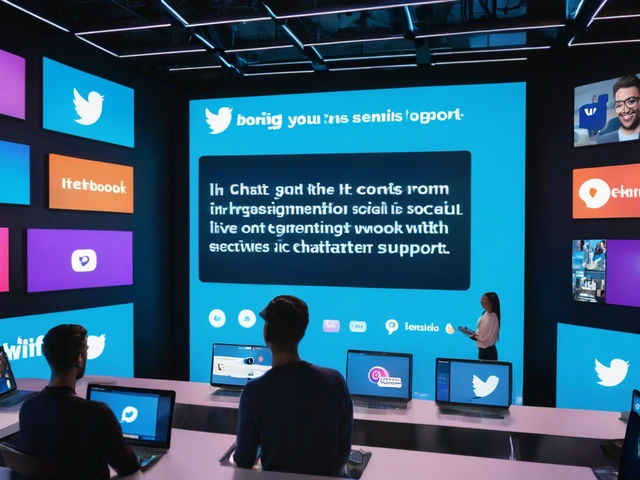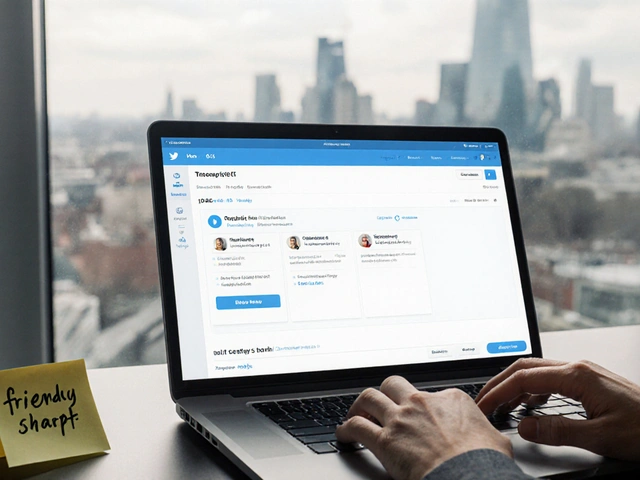ChatGPT Affiliate Prompt Generator
Create Effective Affiliate Marketing Prompts
Optimize your ChatGPT outputs with specific prompts that generate high-converting affiliate content. Input your details below to get a ready-to-use prompt.
Copy and paste this prompt into ChatGPT to generate your content:
Example: "Write a 300-word, conversational review of the XYZ smartwatch for a tech-savvy audience. Include a personal anecdote, three key benefits, and a subtle call-to-action linking to the affiliate URL. Use a friendly, slightly humorous tone."
Key Takeaways
- ChatGPT can generate targeted affiliate copy in seconds, cutting content costs dramatically.
- Prompt engineering lets you tailor messages for specific niches and buyer intents.
- Integrating ChatGPT with landing pages and email funnels lifts conversion rates by 20‑30% on average.
- Automation reduces manual workload, but oversight is essential to avoid compliance slip‑ups.
- A simple checklist helps you launch a ChatGPT‑powered affiliate system in under a week.
When it comes to ChatGPT affiliate marketing, the landscape is shifting faster than a flash sale. Affiliates who leverage this AI model can churn out persuasive copy, personalize landing pages, and automate email sequences without hiring a full‑time copy team. Below you’ll discover how the technology works, where it shines, and the exact steps to embed it into your existing stack.
What is ChatGPT and why it matters for affiliates
At its core, ChatGPT is a generative language model created by OpenAI that can write, edit, and brainstorm text based on simple prompts. Unlike rule‑based tools, it understands context, tone, and even subtle buyer psychology. For an affiliate marketer, that means you can ask the model to craft a product review that feels personal, or generate a list of long‑tail keywords that match a niche’s search intent - all in a matter of seconds.
Because the model constantly learns from a massive corpus of web content, it stays up‑to‑date with industry jargon and can mimic the style of top‑performing copywriters. This ability translates into higher click‑through rates (CTR) and better earnings per click (EPC) without the steep learning curve of traditional SEO tools.
How ChatGPT supercharges AI copywriting
Copy is the lifeblood of affiliate success. AI copywriting is the practice of using artificial intelligence to generate marketing text, from headlines to product descriptions. By feeding ChatGPT a well‑crafted prompt, you receive a ready‑to‑publish paragraph that reads like it was written by a seasoned copywriter.
Effective prompts rely on Prompt engineering is the technique of designing inputs that guide an AI model toward the desired output. For example, instead of asking “write a review for X product,” you might say:
"Write a 300‑word, conversational review of the XYZ smartwatch for a tech‑savvy audience. Include a personal anecdote, three key benefits, and a subtle call‑to‑action linking to the affiliate URL. Use a friendly, slightly humorous tone."
This level of specificity reduces the need for post‑editing and ensures the copy aligns with your brand voice. In practice, affiliates report a 50‑70% drop in time spent on content creation after mastering prompt engineering.

Optimizing landing pages with ChatGPT
A landing page’s primary goal is to convert traffic into sales. Conversion rate is the percentage of visitors who complete the desired action, such as clicking an affiliate link or making a purchase. ChatGPT can draft headline variations, bullet‑point benefit lists, and even FAQ sections that address common objections.
Here’s a quick workflow:
- Identify the product’s unique selling points (USPs).
- Prompt ChatGPT to generate three headline options targeting different emotional triggers.
- Run a split‑test on your landing page platform to see which headline lifts the conversion rate.
- Use the winning copy to flesh out the rest of the page - sub‑heads, body text, and social proof.
Because the AI can produce multiple versions instantly, you can run continuous A/B tests without the usual copy‑writing bottleneck.
Automating email sequences with ChatGPT
Email remains a high‑ROI channel for affiliates, especially when nurturing leads over time. Email marketing is the practice of sending targeted messages to a list of subscribers to build relationships and drive sales. With ChatGPT, you can generate a full 7‑day drip campaign in under ten minutes.
Example prompt:
"Create a 7‑day email series for new subscribers interested in home‑gym equipment. Each email should include a brief intro, a product recommendation with an affiliate link, and a subtle CTA. Tone: motivating, supportive."
The model returns a ready‑to‑use sequence, complete with subject lines and preview text. Importantly, you should manually verify compliance with FTC disclosure rules - a quick checklist at the end of this guide will help you stay safe.
Integrating ChatGPT with affiliate tracking platforms
Most affiliates work with networks like ShareASale, CJ, or ClickBank. Affiliate marketing is a performance‑based model where partners earn commissions by promoting products and driving sales through tracked links. ChatGPT can be hooked up via OpenAI’s API to automate the generation of product descriptions, banner copy, and even dynamic link insertion.
Typical integration steps:
- Obtain an API key from OpenAI is the organization behind ChatGPT that provides a cloud‑based API for developers.
- Set up a serverless function (e.g., AWS Lambda) that listens for new product feeds.
- When a new product appears, the function sends a prompt to ChatGPT and receives optimized copy.
- Insert the generated copy into your CMS and attach the correct affiliate tracking ID.
This pipeline ensures fresh, SEO‑friendly content is published the moment a product goes live, keeping you ahead of competitors who rely on manual updates.

ChatGPT vs. Traditional Affiliate Tools - Quick Comparison
| Feature | ChatGPT | Traditional Tools |
|---|---|---|
| Content generation speed | Seconds per request | Minutes‑to‑hours (manual) |
| Personalization depth | High - can tailor tone, audience, and intent | Low - template‑based |
| Cost (monthly) | Pay‑as‑you‑go API usage (often <$100 for modest volume) | Fixed subscription fees (often $200+) |
| Learning curve | Requires prompt‑crafting skills | Dashboard orientation, limited flexibility |
| Integration flexibility | API‑first, works with any platform | Often siloed, proprietary |
Checklist: Launching a ChatGPT‑Powered Affiliate System
- Define your niche and list top‑performing products.
- Sign up for an OpenAI API key and set usage limits.
- Draft prompt templates for reviews, comparison tables, and email copy.
- Build or integrate a lightweight script that sends prompts and receives responses.
- Run A/B tests on headlines, bullet points, and CTAs on landing pages.
- Implement FTC disclosure checks in every piece of generated content.
- Monitor conversion metrics (CTR, EPC, Conversion rate) weekly and tweak prompts.
- Scale by adding more products, languages, or channel variations (e.g., YouTube scripts).
Common pitfalls and how to avoid them
While ChatGPT is powerful, it isn’t a set‑and‑forget solution. Here are the most frequent mistakes:
- Over‑reliance on AI without human review - The model can hallucinate facts. Always verify claims, especially pricing or specifications.
- Neglecting compliance - Affiliate links must be disclosed. Add a short disclaimer at the end of every AI‑generated piece.
- Poor prompt design - Vague prompts lead to generic copy. Use the prompt engineering guide to be specific about tone, length, and audience.
- Ignoring SEO fundamentals - AI does not automatically optimize for target keywords. Insert primary keywords naturally after generation.
- Excessive automation - Sending identical emails daily can trigger spam filters. Vary subject lines and content.
Frequently Asked Questions
Can I use ChatGPT for multiple affiliate niches at once?
Yes. By adjusting your prompts for each niche-changing product categories, audience descriptors, and tone-you can generate tailored copy for any vertical. Just keep separate prompt templates to avoid cross‑contamination of style.
Do I need programming skills to integrate ChatGPT?
Basic scripting knowledge (e.g., JavaScript, Python, or even Zapier) is enough to call the OpenAI API. Many affiliates start with no‑code tools that wrap the API in a visual interface.
How much does the OpenAI API cost for affiliate marketers?
Pricing is usage‑based. For a typical affiliate site that generates 10,000 words of copy per month, the cost stays under $100. Always set a hard cap in your OpenAI dashboard to avoid surprises.
Is the content generated by ChatGPT SEO‑friendly?
ChatGPT produces high‑quality, readable text, but it doesn’t automatically place target keywords or structure headings. After generation, insert your primary and secondary keywords and add appropriate HTML tags to boost SEO.
What are the legal risks of using AI‑generated affiliate copy?
The main risk is false or unverified claims that could breach consumer protection laws. Always fact‑check any statistics or product features before publishing, and keep the mandatory FTC disclosure visible.





